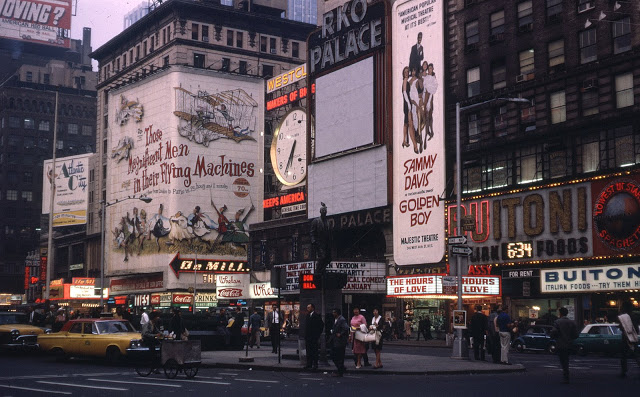New York became the most populous urbanized area in the world in the early 1920s, overtaking London. The metropolitan area surpassed the 10 million mark in the early 1930s, becoming the first megacity in human history.The difficult years of the Great Depression saw the election of reformer Fiorello La Guardia as mayor and the fall of Tammany Hall after eighty years of political dominance.
Returning World War II veterans created a postwar economic boom and the development of large housing tracts in eastern Queens. New York emerged from the war unscathed as the leading city of the world, with Wall Street leading America’s place as the world’s dominant economic power. The United Nations Headquarters was completed in 1952, solidifying New York’s global geopolitical influence, and the rise of abstract expressionism in the city precipitated New York’s displacement of Paris as the center of the art world
Just before the iconic Kodachrome film processing went extinct, the amateur photographer Charles Weever Cushman was kind enough to donate his collection of 14,500 color slides to Indiana University.The collection consists of Kodachrome slides taken in the period between 1938 to 1968, including images of all around the world.
Take a peek in the nostalgic colors of Vintage New York:
Just before the iconic Kodachrome film processing went extinct, the amateur photographer Charles Weever Cushman was sweet enough to donate his collection of 14,500 color slides to Indiana University.
The collection consists of Kodachrome slides taken in the period between 1938 to 1968, including images of all around the world.
Take a peak in the nostalgic colors of Vintage New York:
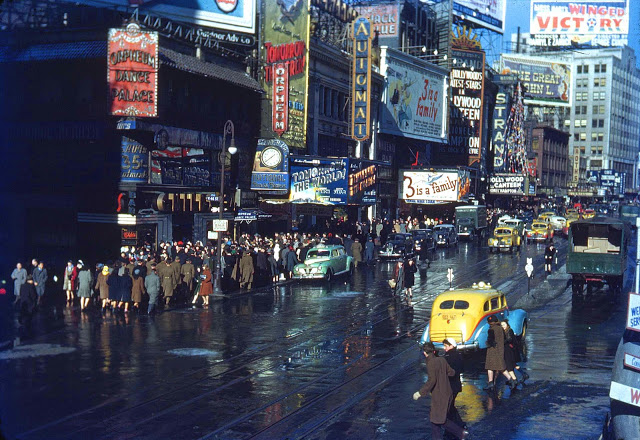
1944 NYC Old theater marquees
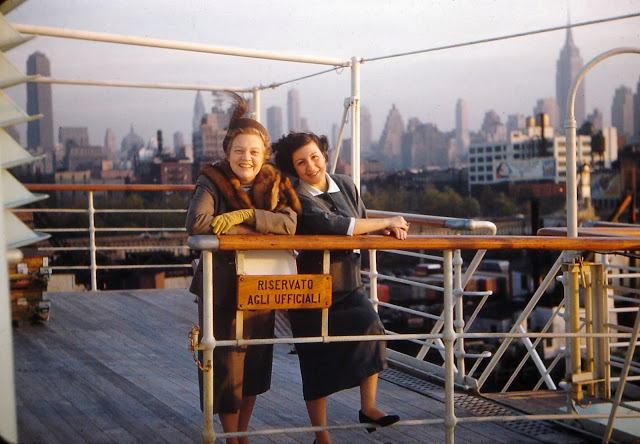
1953 New York Harbor Nov 3, on SS Roma
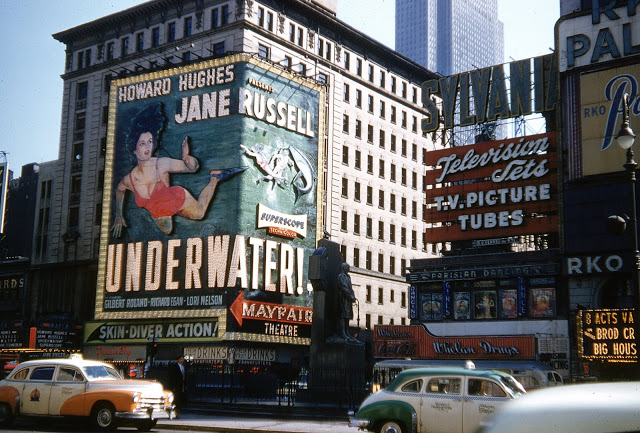
1955 Jane Russell in Underwater presented by Howard Hughes M
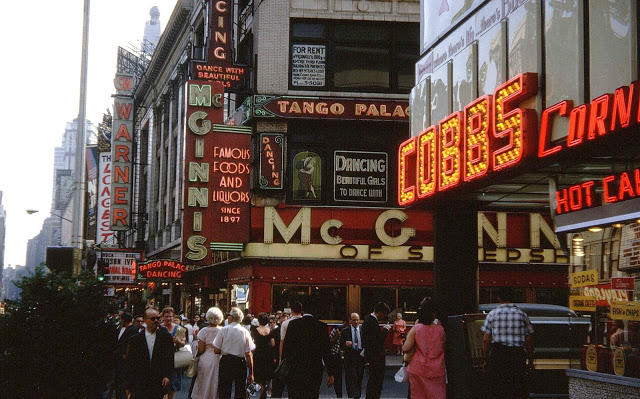
1962 McGinnis Restaurant Tango Palace and Cobbs 48th and Br
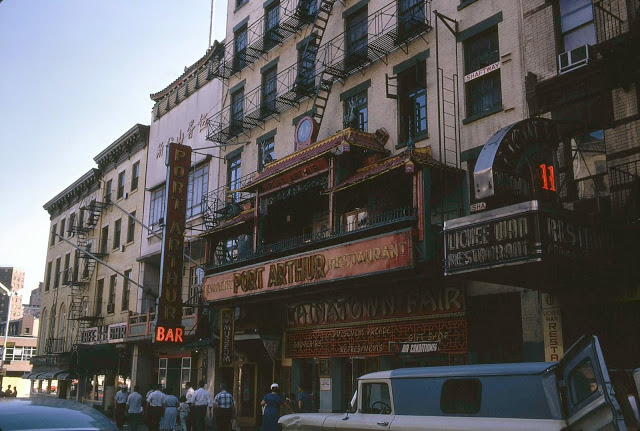
1962 Port Arthur Restaurant NYC
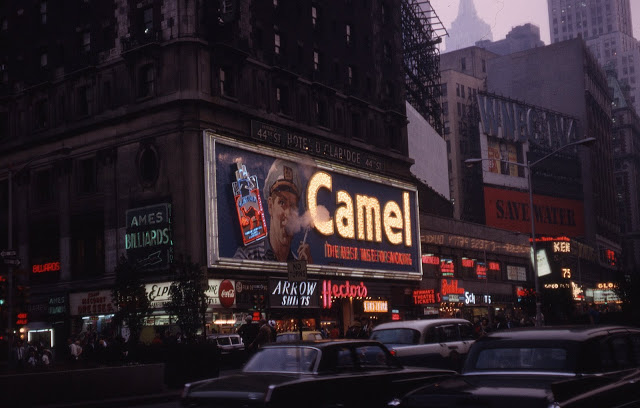
1965 Camel Cigarette Billboard sign near Times Square NYC Se
